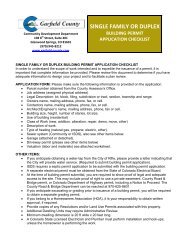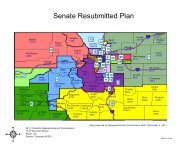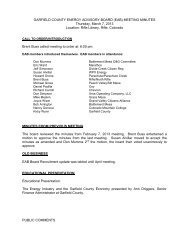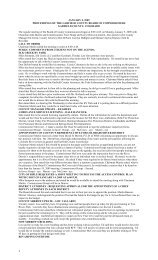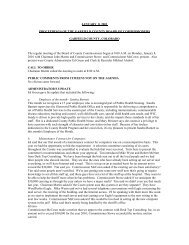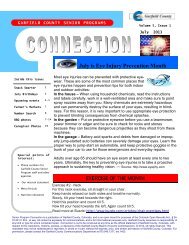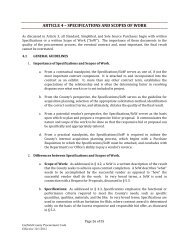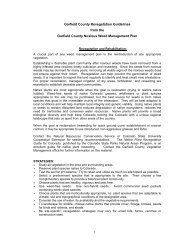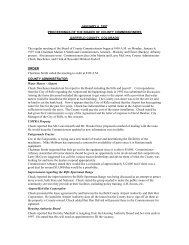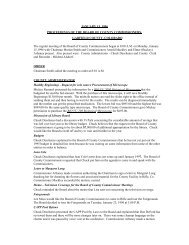Appendix D: Human Health Risk Assessment - Garfield County ...
Appendix D: Human Health Risk Assessment - Garfield County ...
Appendix D: Human Health Risk Assessment - Garfield County ...
You also want an ePaper? Increase the reach of your titles
YUMPU automatically turns print PDFs into web optimized ePapers that Google loves.
<strong>Appendix</strong> D Screening Level <strong>Human</strong> <strong>Health</strong> <strong>Risk</strong> <strong>Assessment</strong> February 2011<br />
Battlement Mesa, Colorado <strong>Health</strong> Impact <strong>Assessment</strong> Colorado School of Public <strong>Health</strong><br />
In the event that the Battlement Mesa Water Treatment Plant was shut down for longer<br />
than one week, drinking and domestic water for Battlement Mesa residents would be<br />
supplied from four groundwater wells along the south bank of the Colorado River (Figure<br />
3-2). These wells are not supplied with water from the Colorado River and it is believed<br />
that the source of water in these wells is from an up-gradient aquifer. There could be a<br />
hydrologic connection between these wells and the aquifer on Battlement Mesa, allowing<br />
for a conduit of natural gas extraction activity contaminants to the secondary drinking<br />
water source. However, the hydrologic connection has not been studied and is currently<br />
theoretical. The annual water quality results from these wells have not indicated any<br />
detectable levels of contamination. For these reasons, the ingestion of, dermal contact<br />
with, and inhalation pathway for contaminants in groundwater is considered to be<br />
minimal under current conditions. These pathways were not considered further in the<br />
HHRA.<br />
Air inside of an occupied building (indoor air) could become contaminated with VOCs<br />
through infiltration if shallow subsurface soil or shallow groundwater in close proximity<br />
to the building were contaminated with VOCs. EPA recommends considering this<br />
pathway if groundwater or soil within 100 feet (laterally or vertically) of an occupied<br />
building is contaminated with VOCs (EPA 2002). This pathway is considered to be<br />
minimal because the wells in Battlement Mesa will be set back at least 500 feet from any<br />
buildings (Antero Plan), and fracturing occurs at depths much greater than 100 feet bgs.<br />
This pathway was not considered further in the HHRA.<br />
Residents could come into direct contact with subsurface soil (i.e. greater than 2 feet<br />
bgs). However, this is unlikely because it would involve significant digging or<br />
excavation activities unlikely under the residential scenario. This pathway was not<br />
considered further in the HHRA.<br />
3.5 Exposure Assumptions and Intake Equations<br />
This section presents assumptions for chronic exposures of all residents and residents<br />
living adjacent to well pads to contaminants from natural gas production operations<br />
within the Battlement Mesa PUD. Assumptions for child residents living adjacent to well<br />
pads also are presented.<br />
3.5.1 All Resident Chronic Exposure Assumptions and Intake<br />
Equations<br />
Only ambient air was quantitatively evaluated for the residential chronic exposure<br />
scenario because data on which to estimate for surface soil EPCs is not available and<br />
exposure to surface water run-off from pads is expected to be of short duration. The<br />
chronic exposure area for contaminants in ambient air is the entire Battlement Mesa<br />
PUD.<br />
Chronic EPCs for ambient air were estimated from ambient air samples collected from<br />
September 2010 through November 2010 at the Battlement Mesa Monitoring Station<br />
(<strong>Garfield</strong> <strong>County</strong> 2010) for use in estimating the baseline risk in Battlement Mesa. It is<br />
<strong>Appendix</strong> D page 23



